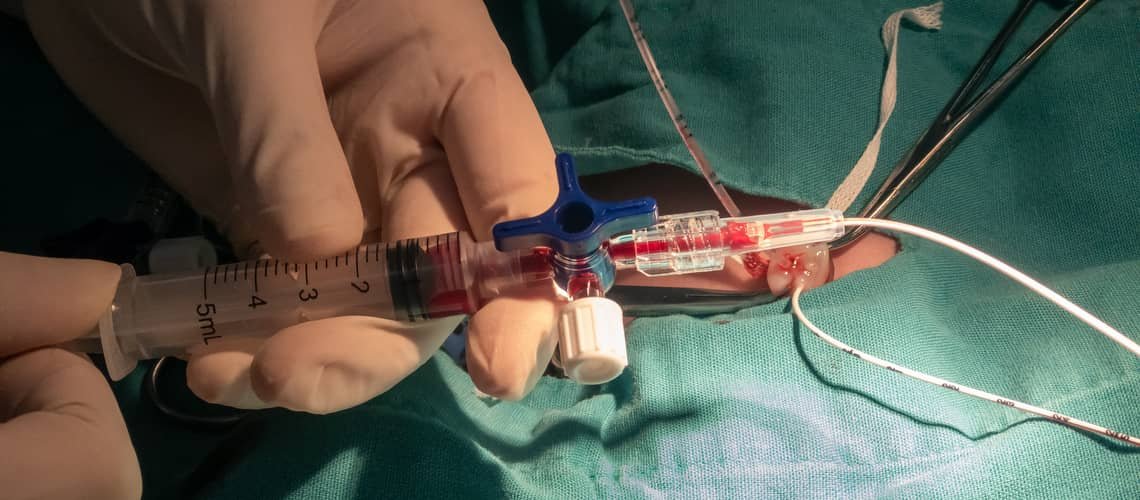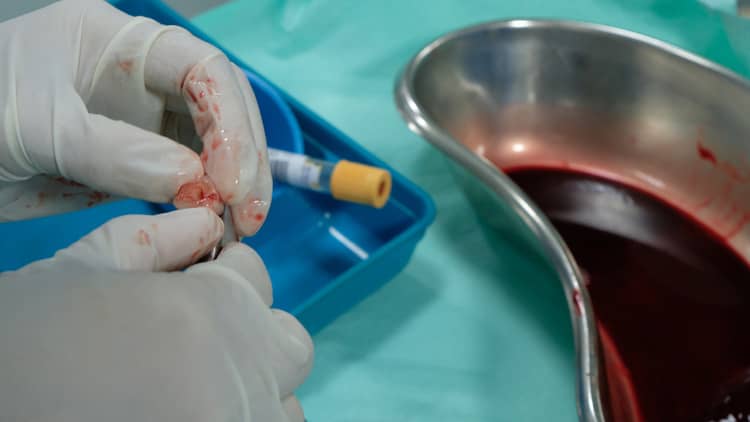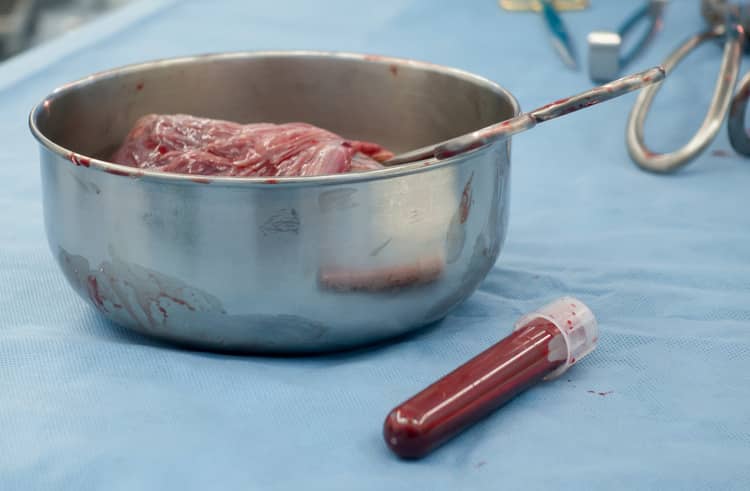
Cord blood collection - price $600 and experience with collection
A business with fear or an effective way to get money from parents? Cord blood collection - yes or no? A highly discussed topic even nowadays. Parents most often learn about the possibility of umbilical cord blood collection from a gynecologist or read about this service on the Internet. Umbilical cord blood is collected directly at birth. Umbilical cord blood as a biological material is specific in that it contains very valuable and unencumbered hematopoietic stem cells. Collection can be carried out for various purposes. Subsequently, this blood can be stored and, if necessary, used in the treatment of serious diseases. Primarily, umbilical cord blood collection should be helpful in the treatment of hematological, immunological or oncological diseases. What is the subscription price and what do people's experiences say?
Cord blood can be collected and stored in a family or donor bank. In the first case, the blood can later be used only for the child from whom it was taken, or for a sibling, if the necessary agreement is reached. Umbilical cord blood is also stored at the donor bank, but these blood cells can be donated to strangers in need of hematopoietic cell transplantation. The efficacy of umbilical cord blood and the significance of its collection are constantly discussed in various clinical studies. Several medical experts (including Slovak doctors) are skeptical about the collection of umbilical cord blood and its use. The reason is the relatively small number of known cases when blood was used and effectively helped in the treatment of patients. At the same time, it is a financially costly matter for parents.
What is cord blood?
This is blood that comes from the umbilical cord or perinatal tissue - the placenta or umbilical cord. This blood normally protects the fetus from toxic substances during pregnancy. It is a very important source of hematopoietic stem cells, from which red and white blood cells are formed. They are essential for blood production in our body. These collected blood cells help in the treatment of specific diagnoses where blood cell therapy (blood cell restoration) is required. Thanks to its stem cells, transplantation ensures the regeneration of blood in the body. The advantage is that the blood is not marked by age (aging), diseases or ongoing treatment.
Another benefit of umbilical cord blood is that it also contains other biologically active components. Among them mesenchymal stem cells. This means that thanks to this component, stem cells are able to differentiate and it is therefore potentially possible to use umbilical cord blood in the treatment of other diseases.

Significance of blood collection from the umbilical cord
The purpose of taking umbilical cord blood is to use it for further treatment. Due to the fact that it contains hematopoietic stem cells, it is primarily used in the treatment of oncological and hematological diseases – lymphomas, cancer, leukemia, neuroblastomas, medulloblastomas, hematopoietic disorders, metabolic disorders or immune disorders.
In the field of regenerative medicine and hematology, hundreds of researches are constantly being carried out, which focus on the potential further use of blood cells obtained from the blood or tissues of the umbilical cord and placenta. Clinical studies on the effect of umbilical cord blood on neurological disorders in young children are being carried out. Potentially, the effects in the field of rheumatological, autoimmune and other diseases - autism, psoriasis, cerebral palsy, stroke, Parkinson's or Alzheimer's disease - are being investigated.
It is interesting that information is often given about the great importance of blood from the umbilical cord, for example, in the treatment of leukemia. Cord blood is considered a substitute for stem cell regeneration. Otherwise, hematopoiesis takes place in a person's bone marrow. In reality, however, cord blood is the second or next option after bone marrow transplantation for many of the reported diseases related to hematopoiesis. Until then, the application of umbilical cord blood is not applied, because it has weaker effects due to the lower maturity of the cells. It has potential if it is not possible to perform a bone marrow transplant in a person. Replacement of stem cells with umbilical cord blood in the bone marrow is not scientifically proven.
Umbilical cord blood collection procedure
The collection itself is painless for the woman and the child. If you are interested in this type of subscription, an order is required, which you can make online. Also consult your gynecologist - obstetrician. It is important that the woman is in the maternity ward, where this collection can be carried out. You can find the list of maternity hospitals on the websites of family and donor banks. Collection takes place immediately after the birth, therefore it does not interfere in any way with the birth process. The umbilical cord blood collection procedure can be performed in any type of pregnancy that occurred after the 37th week of pregnancy. A caesarean section is not a problem either. Collection is not suitable only in cases of complicated births, when the condition and appropriateness of collection is assessed by a doctor.
Umbilical cord blood collection using a closed method is used the most, when the vein of the umbilical cord is punctured and the blood is collected in a bag with an anti-clotting solution. Sampling is done from the umbilical cord or placenta. It is possible to carry out the collection even after the umbilical cord has been tapped. Then the umbilical cord is cut and the blood is ideally taken within 1 minute. The quality of the collection is also high and the pulsation of the umbilical cord does not affect the cellularity of the blood. If it were a longer time after cutting, it is also advisable to consider blood collection from the surface veins of the placenta or direct collection of perinatal tissue from the umbilical cord and placenta.
Subsequently, there is a laboratory examination of the sample, processing and its storage. Depending on whether you opt for a family bank or a donation collection that will be available to the public, you will receive a certificate for the processing and storage of cord blood and tissues. When donating, after 6 months, the mother comes for a check-up of blood. Within 6 months of the collection, at the same time as the donation, you will receive information that the umbilical cord blood is suitable for transplantation, if you do not receive this information, it means that the blood was not suitable for medical use.

Collection of umbilical cord blood - price and storage
Collections are stored in umbilical cord blood banks. These are divided into family banks (Cord Blood Center) or donor banks. In the case of collection and storage in a family bank, exclusive and immediate access to stem cells and tissues is guaranteed only to the child and his parents. Collection of umbilical cord blood and its storage are charged. Such withdrawals are not covered by insurance companies in Slovakia or in the world. You pay around 700 euros for a standard collection of umbilical cord blood, while you also pay an annual fee for its storage in the amount of 70 euros. There are also extended packages, for example umbilical cord blood collection and tissue collection from the umbilical cord or placenta. Such collection costs approximately 1,000 euros, and the annual storage costs are around 90 euros. Possible treatment using umbilical cord blood (stem cell transplantation) is already covered by insurance companies.
When donating umbilical cord blood to the donor registry, the donated stem cells can be provided to a person who needs them due to his illness. During the donation process, the woman must meet certain criteria, on the basis of which it is possible to comply with the legislation and the requirements of the transplant centers. The limit is, for example, the birth weight of the child, which should be at least 4 kg when donating. The donor registry becomes the owner of the umbilical cord blood and tissues, and the blood is provided to patients around the world when needed. Parents have no guarantee that donated blood will be available when needed. When donating umbilical cord blood to the public registry, you do not pay any fees for collection or storage of umbilical cord blood or tissue. In this case, all costs are covered by the donor register itself.
Umbilical cord blood and tissues of the placenta or umbilical cord are stored in special bags. They are placed in containers where they are exposed to liquid nitrogen vapor at a temperature of -150 °C to -180 °C. The temperature is permanently monitored. In this way, it is possible to preserve the original quality of the samples for tens or even hundreds of years. Therefore, there is no risk of expiration.
Free umbilical cord blood collection?
There is a possibility when the collection of umbilical cord blood and perinatal tissues is provided free of charge. This is the case when the child has a sibling who suffers from a disease, in which it is possible to use the effects of stem cells from umbilical cord blood or tissue from the placenta or umbilical cord. In this case, the collection is free and the transplant itself is covered by the insurance company.
One of the interesting possibilities is the competition for the collection of umbilical cord blood and umbilical cord tissue. This competition is regularly organized by the family bank, which is operated by the Cord Blood Center in our territory. You can join online. Just fill out the registration form.

Collection of umbilical cord blood - experience
The greater part of the discussants agree that it is just a way to extract money from the parents during the collection itself and also year after year during the subsequent storage. Many parents also have the experience that if in the past they underwent umbilical cord blood sampling for their first child, they skipped this step for the second. Some mothers call it a " business with fear " - parents believe in doing everything for their child's health, paying considerable funds. Some prefer the option of donating blood or tissues to a public registry - for free. However, the conditions for meeting the donor's conditions are more demanding. There are also opinions about unreliable stories of successful treatment. There are also positive responses, but without real treatment results.
The most frequent questions - FAQ
In your opinion, is umbilical cord blood collection an interesting option for solving your child's future health problems? What do you think is the significance of umbilical cord blood collection? Do you have experience with umbilical cord blood collection? We will be happy if you share your opinions and experiences in the discussion below the article. Also, if you have questions about the issue, don't hesitate to ask in the comments. We will be happy to answer your questions.
What is the price of umbilical cord blood sampling?
Is it possible to get a free umbilical cord blood collection?
What is the importance of collecting cord blood?
Pridať komentár





